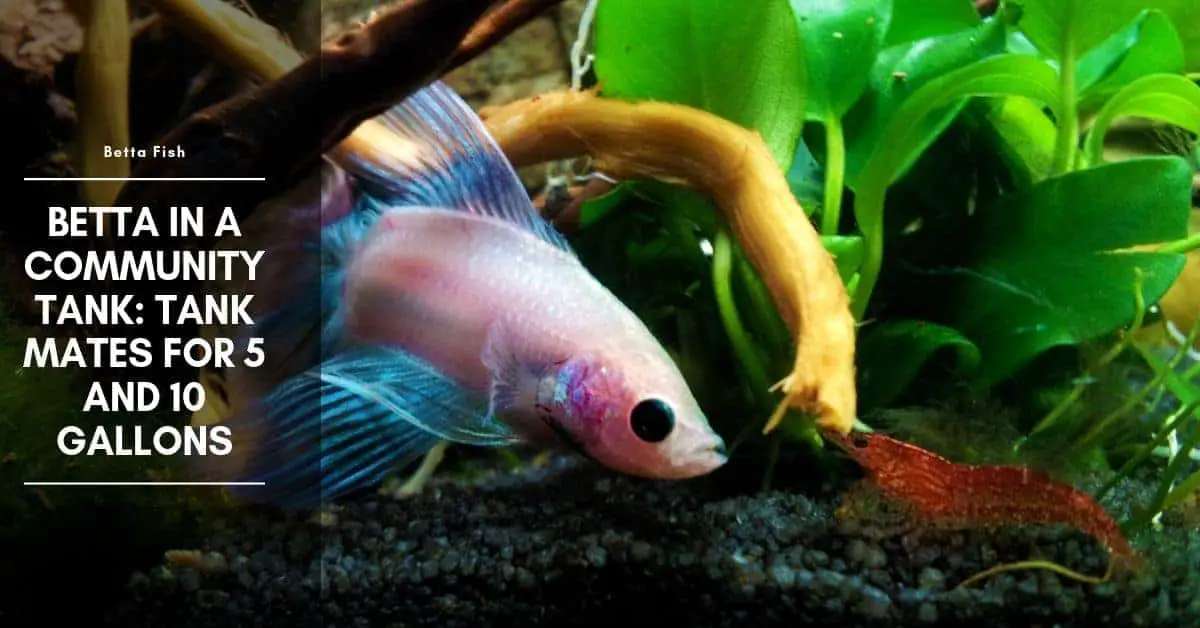Bettas are pretty solitary creatures. They don’t typically like to be around their own kind, much less a bunch of other fish. That’s not to say you can’t have happy, healthy betta in a community tank, but there are definitely considerations.
I’d guess that most people are going to have a betta tank on the smaller side between 5 and 10 gallons. Even if you’ve upgraded your betta from an even smaller tank to a 5 gallon (and good for you if you have!), you still don’t have a lot of options when it comes to tank mates for your betta.
Betta tank mates for 5 Gallons
In a tank this small, you’re pretty much limited to shrimp or snails. Any other fish that are small enough to be in this tank are schooling fish and thus need more space so they can be in a group.
Luckily, there are a number of varieties of snails and dwarf shrimp that should be pretty easy to find in pet stores around you or, of course, online. Most of them will feed on decaying plant matter, algae, and/or leftover fish food. If you’d like to supplement their food, algae pellets or blanched vegetables are always a good option. Zucchini is a favorite in my tanks!
Mystery snails
Mystery snails are a popular option since they come in a variety of colors like black, pink, and blue; they can breed in freshwater and can grow fairly large. However, their large antennae may become a target for aggressive bettas.
Nerite snails
Nerite snails are another popular option. They can be found in black, orange stripe, and other colors. While they can’t breed in freshwater, they will leave small, white eggs around. They also need to be able to feed on algae growing in the tank, so they may be a slightly better option once your tank has been established for a while.
There are other kinds as well like an assassin, trumpet, pond, and bladder snails, but they tend to be small or come in fewer colors. If you have live plants, don’t be surprised if you discover ramshorn snails in your tank, and they often come along on plants as hitchhikers.
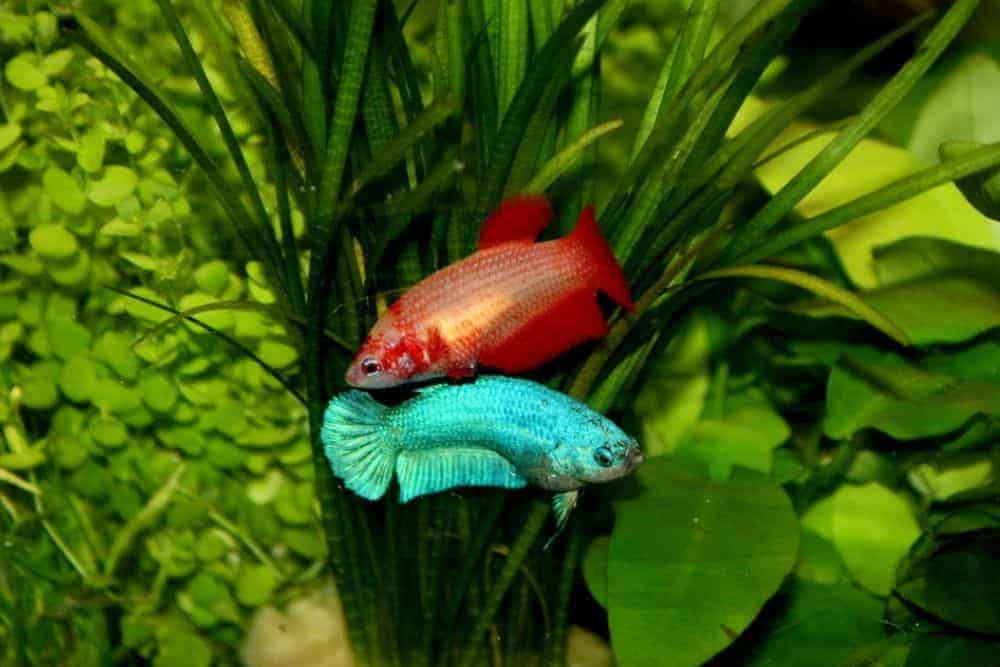
Ghost shrimp
Ghost shrimp are the cheapest option, often found for less than $0.50 each. Also known as glass shrimp and named for their semi-translucent bodies, these little guys are often sold as feeder shrimp and can breed in freshwater, although bettas will typically eat the babies before they grow unless there are a lot of hiding spots. They grow to be around 1.5″ in length with the females being larger and more aggressive than the males.
API STRESS ZYME Freshwater and Saltwater Aquarium Cleaning Solution 16-Ounce Bottle
API ACCU-CLEAR Freshwater Aquarium Water Clarifier 4-Ounce Bottle
30% OffAPI GENERAL CURE Freshwater and Saltwater Fish Powder Medication 10-Count Box
19% OffSome may be fine with your betta, while particularly aggressive females may try to grab at your betta’s fins, particularly if they’re long. Also of note is that juvenile freshwater prawns look incredibly similar to ghost shrimp and are sometimes accidentally sold as them. These prawns are carnivorous and can hurt or kill your betta after they grow! If you notice aggression, remove the shrimp/prawn immediately.
Amano shrimp
Amano shrimp are another great option. They’re a bit larger than ghost shrimp and do not reproduce in freshwater tanks. While not overly colorful, they will have more dots on them and may gain color over time if they’re consuming a varied diet; I have some Amano shrimp that have turned a lovely rusty color. There shouldn’t be any aggression issues, although, as with any shrimp, betta fish will probably eat very small ones.
Neocaridina
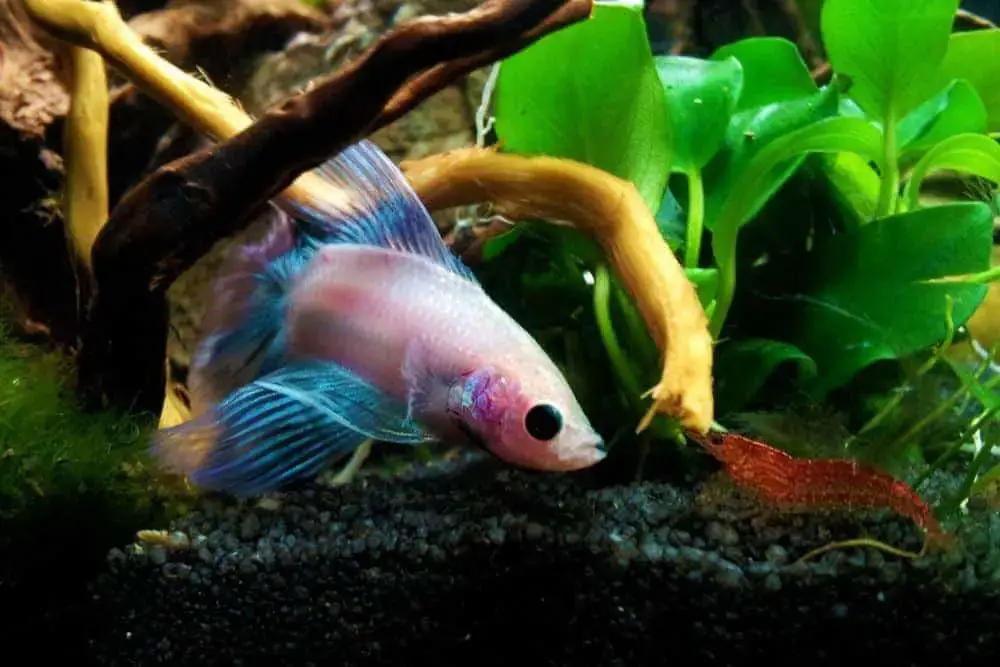
Finally, Neocaridina is another great option. Smaller than the other two types, the red color is known as “cherry shrimp” tends to be most easily found. These shrimp now come in a ton of colors including black, blue, yellow, orange, green, white, and more. If you get different colors, they will interbreed and start reverting to their plain brownish wild coloration over time. However, because of their size, even adult cherry shrimp may become a meal for hungry betta. It’s completely a gamble and depends on the size and aggressiveness of your betta.
Betta tank mates for 10-Gallons
You have a few more options here, but not all that many, and you pretty well need to pick one type of schooling fish and stick with it rather than getting 1-2 of different types. In general, schooling fish should be kept in groups of at least 6, although more is better. Remember, betta would be perfectly happy alone even in a 10-gallon tank, so “friends” beyond the aforementioned shrimp or snails really aren’t necessary. If you do want to keep other types of fish with betta, it’s a smart idea to add the betta last to avoid confusion over territory and aggression issues.
Ember tetras
Ember tetras are a great option for a small schooling fish. Smaller than their ubiquitous and sometimes tail-nippy cousins neon tetras, ember tetras are a lovely orange color. They’ll eat pretty much the same thing as your betta and prefer calm, dark environments with lots of places to hide.
Larger groups are better with these fish, as they can be shy in smaller schools.
Corydoras
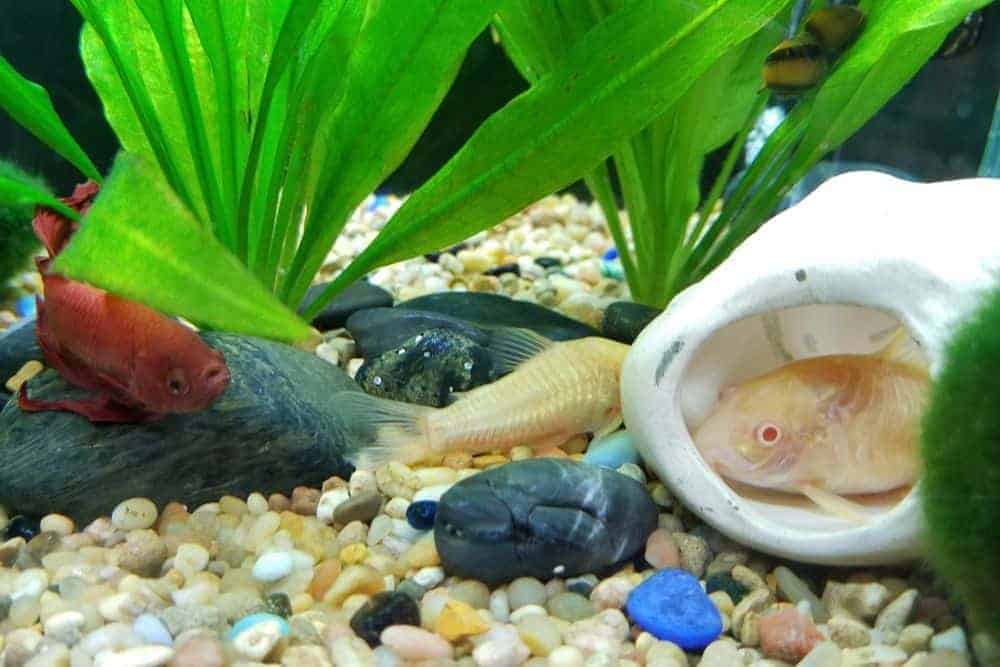
Corydoras are another option. Also known as cory catfish, these bottom-feeders come in a couple of varieties and are small and peaceful. They will eat algae pellets designed for bottom-dwellers or sinking fish food. Because they spend most of their time eating off the substrate, they need sand instead of gravel so they aren’t hurt by any sharp pieces in there.
Rasboras
Like corydoras, rasboras come in a number of varieties and colors. They tend to be kept in slightly larger groups and different types may prefer different water parameters, so it’s important to check with your local fish store or google to make sure they’re compatible with your water.
Betta tank mates for Bigger Tanks
Above 10 gallons, your options start opening up to things like guppies, other types of tetras, barbs, and plecos. However, it’s very important to do research before buying instead of just buying whatever looks appealing at the moment.
Bettas may be aggressive to other colorful or long-finned fish, mistaking them for other bettas. Or you may discover that your other fish are the aggressors; neon tetras and zebra danios, both extremely common in the aquarium hobby, have been known to nip at a betta’s tail.
Fish you shouldn’t add to your betta’s tank
Many fish aren’t compatible with bettas. Sharks (which are actually a kind of catfish but look like small sharks), goldfish, gouramis, mollies, pygmy pufferfish, and cichlids are all poor tankmates, whether it’s from aggression issues or different water and temperature requirements.
Don’t forget that the fish you see in a store tend to be young—some of them may grow way more than you expect! A perfect example are plecos, an algae eater similar in appearance to corydoras. The common plecos I see for sale in large pet stores are less than two inches in length… and they grow up to two feet. Other varieties like the bristlenose are smaller, but they still require a much larger aquarium than people would expect looking at them.
Summary
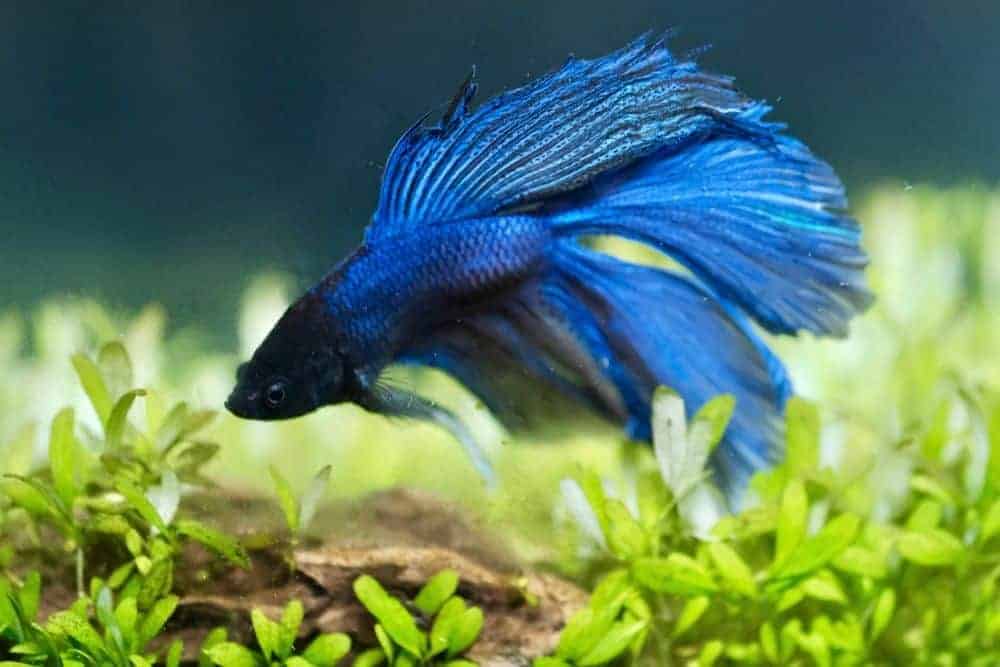
I don’t recommend these for inexperienced aquarium owners, as females can be just as aggressive toward each other as males. Females, like males, do just fine alone. If a betta sorority is something you might be interested in, be aware that they need to be in groups of at least six in a 30-gallon tank and added at the same time so they can establish a pecking order.
A good rule of thumb when it comes to pretty much anything to do with aquariums: when in doubt, Google it out! Heck, even if you’re not in doubt, Google it out anyway. Taking a few minutes of your time is definitely better than making a mistake and accidentally hurting or killing your fish.

Hi, my name is Sean, and I’m the primary writer on the site. I’m blogging mostly about freshwater and saltwater aquariums, fish, invertebrates, and plants. I’m experienced in the fishkeeping hobby for many years. Over the years I have kept many tanks, and have recently begun getting more serious in wanting to become a professional aquarist. All my knowledge comes from experience and reading forums and a lot of informative sites. In pursuit of becoming a professional, I also want to inspire as many people as I can to pick up this hobby and keep the public interest growing.
Read more about Sean.
Please join also my Facebook group.

